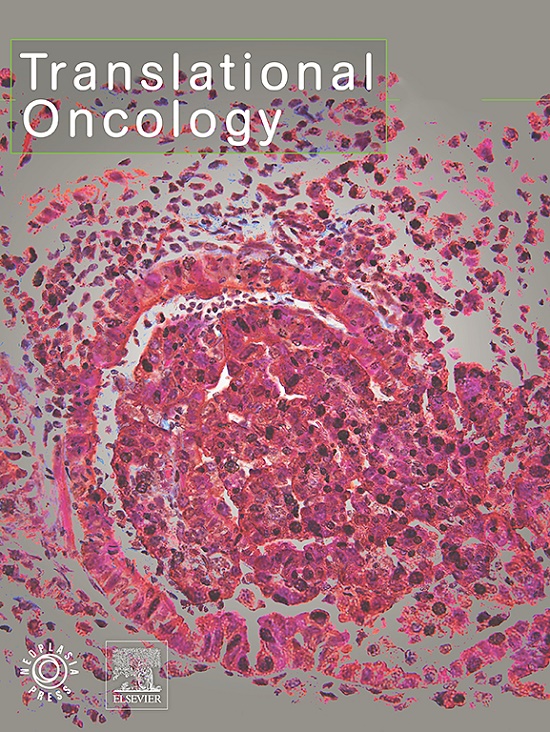Synergistic effects of HO-1 inhibition and chemotherapy on tumor proliferation and immune infiltration: An in vitro and in vivo approach to enhancing prostate cancer treatment
IF 5
2区 医学
Q2 Medicine
引用次数: 0
Abstract
Prostate cancer (PC) remains a leading cause of morbidity and mortality among men worldwide, highlighting the need for novel therapeutic strategies. Our study investigates the therapeutic potential of targeting the heme degradation pathway through heme oxygenase-1 (HO-1) inhibition in PC. Using both in vitro and in vivo models, we explored the effects of combining HO-1 inhibition with chemotherapy, represented by docetaxel (Doc), on tumor growth and immune infiltration. In vitro experiments demonstrated that HO-1 inhibition, as well as HO-1 knockout (KO), significantly reduced tumor cell proliferation and enhanced chemosensitivity in RM-1 cells. Additionally, U937 cells co-cultured with HO-1 KO cells shifted cell polarization toward an M1 phenotype. In vivo, the combined treatment of the HO-1 inhibitor, tin protoporphyrin (SnPP), with Doc significantly enhanced anti-tumor efficacy in mouse models compared to chemotherapy or SnPP alone. This combination therapy not only reduced Ki67 expression and increased CC3 expression in tumor tissues but also shifted macrophage polarization toward an M1 phenotype and enhanced CD4+ and CD8+ T cells infiltration, indicating an augmented immune response. Further investigation using macrophage-specific HO-1 knockout mice revealed a direct role of HO-1 inhibition in driving macrophage polarization, confirming its involvement in promoting the shift toward an M1 phenotype. Although this response was significant, it was more robust with systemic HO-1 inhibition. Our findings indicate that HO-1 inhibition can potentiate the effects of chemotherapy, offering a promising avenue for improving PC treatment outcomes.

HO-1抑制和化疗对肿瘤增殖和免疫浸润的协同作用:一种体外和体内增强前列腺癌治疗的方法
前列腺癌(PC)仍然是世界范围内男性发病率和死亡率的主要原因,强调需要新的治疗策略。我们的研究探讨了通过抑制血红素氧化酶-1 (HO-1)靶向PC中血红素降解途径的治疗潜力。通过体外和体内模型,我们探讨了以多西紫杉醇(Doc)为代表的化疗联合抑制HO-1对肿瘤生长和免疫浸润的影响。体外实验表明,HO-1抑制以及HO-1敲除(KO)可显著降低肿瘤细胞增殖,增强RM-1细胞的化疗敏感性。此外,与HO-1 KO细胞共培养的U937细胞将细胞极化向M1表型转移。在体内,HO-1抑制剂锡原卟啉(SnPP)与Doc联合治疗小鼠模型的抗肿瘤效果比单独化疗或SnPP明显增强。这种联合治疗不仅降低了肿瘤组织中Ki67的表达,增加了CC3的表达,而且使巨噬细胞极化向M1表型转变,增强了CD4+和CD8+ T细胞的浸润,表明免疫反应增强。对巨噬细胞特异性HO-1敲除小鼠的进一步研究揭示了HO-1抑制在驱动巨噬细胞极化中的直接作用,证实了其参与促进向M1表型的转变。虽然这种反应是显著的,但在全身性HO-1抑制下更为强烈。我们的研究结果表明,HO-1抑制可以增强化疗的效果,为改善PC治疗结果提供了一条有希望的途径。
本文章由计算机程序翻译,如有差异,请以英文原文为准。
求助全文
约1分钟内获得全文
求助全文
来源期刊

Translational Oncology
ONCOLOGY-
CiteScore
8.40
自引率
2.00%
发文量
314
审稿时长
54 days
期刊介绍:
Translational Oncology publishes the results of novel research investigations which bridge the laboratory and clinical settings including risk assessment, cellular and molecular characterization, prevention, detection, diagnosis and treatment of human cancers with the overall goal of improving the clinical care of oncology patients. Translational Oncology will publish laboratory studies of novel therapeutic interventions as well as clinical trials which evaluate new treatment paradigms for cancer. Peer reviewed manuscript types include Original Reports, Reviews and Editorials.
 求助内容:
求助内容: 应助结果提醒方式:
应助结果提醒方式:


